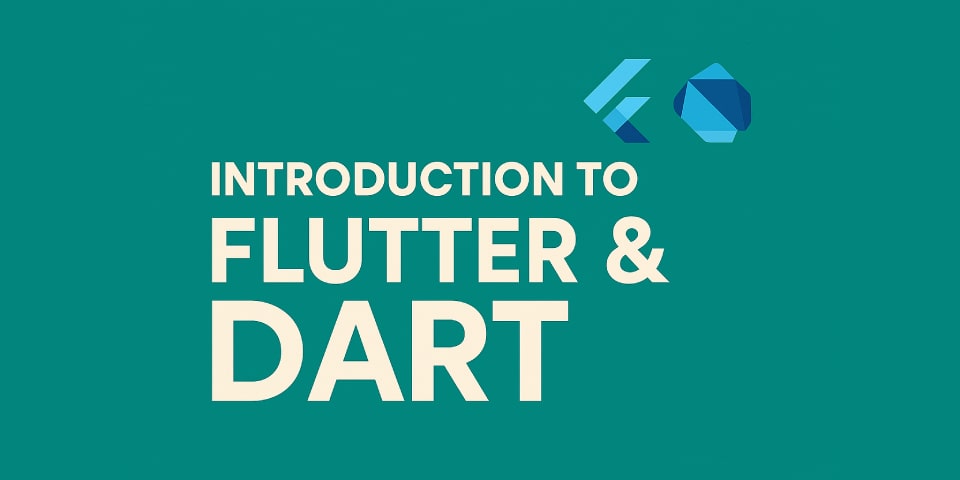
Introduction to Flutter & Dart
What is Dart and what are its main features?
Answer:
Dart is a programming language developed by Google, primarily designed for cross-platform application development with Flutter. Its main features include:
- Object-oriented: based on classes and objects, supporting inheritance and polymorphism
- Null safety: prevents errors from uninitialized variables (
int?is nullable,intis not) - Strong and static typing: every variable has a well-defined type
- Clean and modern syntax: similar to JavaScript and C#
- Asynchronous support with Future and Stream
What’s the difference between var, final, and const?
Answer:
- var: declares a variable with inferred type, can be reassigned
- final: can be assigned only once, but its value may be a mutable object
- const: compile-time constant, immutable and cannot reference non-constant objects
var name = "Manuel"; // can change
final today = DateTime.now(); // one assignment only
const pi = 3.14; // pure constantHow do you define a function with optional and default parameters?
Answer:
String greet({String name = "guest"}) {
return "Hello, $name!";
}Parameters inside {} are named and optional.
You can assign default values. Dart also supports optional positional parameters: [String name].
What’s the difference between classes and mixins?
Answer:
A class is the basic structure that can be extended (extends) or implemented (implements).
A mixin is a way to add functionality to a class without multiple inheritance.
mixin Logger {
void log(String msg) => print("LOG: $msg");
}
class Service with Logger {
void run() {
log("Service executed.");
}
}Mixins are great for reusing logic without complex hierarchies.
What are Future, async/await, and Stream?
Answer:
- Future
represents data that will be available in the future (e.g. HTTP call) - async makes a function asynchronous
- await pauses execution until the Future completes
- Stream represents a sequence of async events (e.g. timers, user input)
Future<String> greetLater() async {
await Future.delayed(Duration(seconds: 1));
return "Hello after a second!";
}Flutter Concepts
What’s the difference between StatelessWidget and StatefulWidget?
Answer:
- StatelessWidget: immutable UI, doesn’t change over time — ideal for static UI
- StatefulWidget: UI that can change state (e.g. counter, input).
Has an associatedStateobject that handles dynamic behavior.
class MyWidget extends StatelessWidget {
@override
Widget build(BuildContext context) {
return Text("Immutable");
}
}
class Counter extends StatefulWidget {
@override
State<Counter> createState() => _CounterState();
}
class _CounterState extends State<Counter> {
int value = 0;
void increment() {
setState(() {
value++;
});
}
@override
Widget build(BuildContext context) {
return Column(
children: [
Text("$value"),
ElevatedButton(onPressed: increment, child: Text("Increment")),
],
);
}
}What is the lifecycle of a StatefulWidget?
Answer:
Key lifecycle stages:
createState(): creates associated stateinitState(): called once at startbuild(): called whenever state changesdispose(): called when widget is removed
Used to manage resources (e.g. controllers, listeners)
How do you navigate between screens?
Answer:
Basic navigation:
Navigator.push(context, MaterialPageRoute(
builder: (context) => SecondPage()));Go back:
Navigator.pop(context);Named routes:
Navigator.pushNamed(context, "/profile");Routes must be configured in MaterialApp → routes
How is state managed in Flutter?
Answer:
Flutter offers various approaches:
setState()→ basic, for small local state- Provider → simple and reactive
- Riverpod → advanced, based on Provider
- Bloc → Stream-based pattern, verbose but scalable
Companies often use Provider or Riverpod for simplicity and testability.
Practical Questions
How do you create a dynamic scrollable list?
ListView.builder(
itemCount: items.length,
itemBuilder: (context, index) {
return ListTile(
title: Text(items[index]),
);
},
);Ideal when list length is dynamic or large.
How do you display an image from the network?
Image.network("https://example.com/img.jpg");You can also use Image.asset() for local images.
How do you add padding and margin?
Answer:
- Padding: wraps a widget and adds internal space
- Container: can have
margin,padding, anddecoration
Padding(
padding: EdgeInsets.all(8.0),
child: Text("Text"),
)Container(
margin: EdgeInsets.symmetric(horizontal: 10),
child: Text("Text with margin"),
)How do you implement a login screen with validation?
Answer:
Use TextFormField, Form, and GlobalKey<FormState>().
Validate with validator and formKey.currentState.validate()
final _formKey = GlobalKey<FormState>();
String email = "";
Form(
key: _formKey,
child: Column(
children: [
TextFormField(
onChanged: (val) => email = val,
validator: (val) => val!.contains("@") ? null : "Invalid email",
),
ElevatedButton(
onPressed: () {
if (_formKey.currentState!.validate()) {
print("Login valid!");
}
},
child: Text("Login"),
),
],
),
);How do you make HTTP requests?
Answer:
Using the http or dio package.
import 'package:http/http.dart' as http;
Future<void> getData() async {
final response = await http.get(Uri.parse("https://api.example.com/data"));
if (response.statusCode == 200) {
print(response.body);
} else {
throw Exception("HTTP error");
}
}Use try/catch and handle errors properly.
Package Management
What is pubspec.yaml?
Answer:
It’s the app’s configuration file for packages and resources.
Includes:
- Project name
- Flutter/Dart versions
- Dependencies (
http,provider, etc.) - Assets (images, fonts)
yaml dependencies: flutter: sdk: flutter provider: ^6.0.0 flutter: assets: - images/
After modifying it, run flutter pub get